For additional information relating to this article, please contact:
March 28, 2024JOB VACANCIES, JANUARY 2024 Monthly (January 2024 vs December 2023, seasonally adjusted)
Nova Scotia had 14,290 job vacancies in January 2024 with a vacancy rate of 3.1%. Job vacancies decreased by 1,870 from December.
Canadian employers were actively recruiting for 632,105 positions in January with a vacancy rate of 3.6%. National job vacancies declined in January, continuing the downward trend that began in early 2022. The highest vacancy rate was reported in British Columbia, followed by Quebec and Prince Edward Island while the lowest vacancy rated were reported in Nova Scotia and Ontario.
The national job vacancy rate was unchanged in January 2024. Six provinces reported lower vacancy rates in January compared to December.
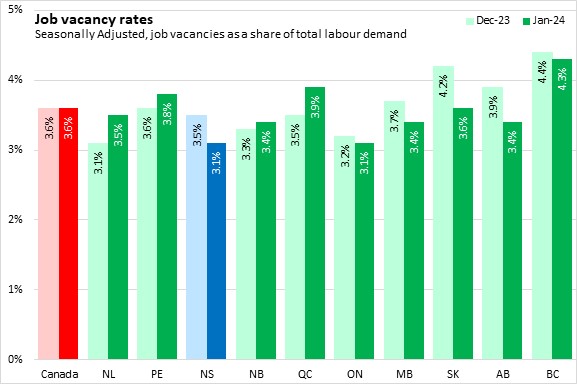
When compared to December 2023, the number of job vacancies in Nova Scotia declined 11.6% or 1,870 jobs. National job vacancies declined 0.9% or 5,880 jobs. Job vacancies increased in four provinces led by Newfoundland and Labrador. The fastest declines in job vacancies compared to December were in Alberta, Saskatchewan and Nova Scotia.
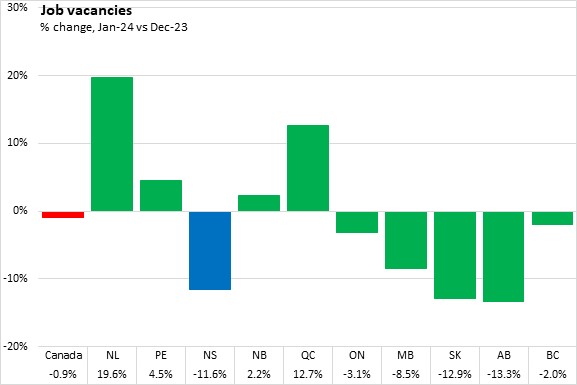
Year-over-year (January 2024 vs January 2023)
When compared to January 2023, the job vacancy rate in Nova Scotia declined 1.4 percentage points. Nationally, job vacancy rate declined from 4.8% to 3.6%. Compared to one year earlier, the job vacancy rate declined in all provinces except Newfoundland and Labrador.
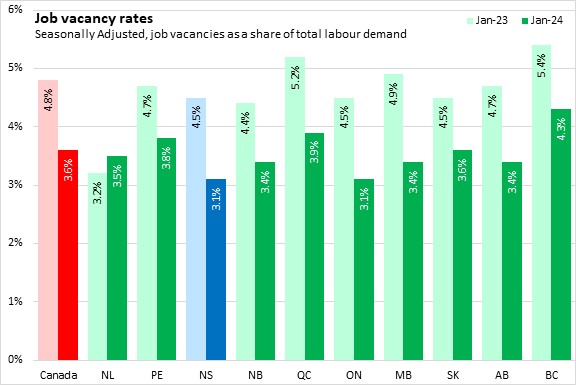
When compared to January 2023, the number of job vacancies in Nova Scotia declined 29.1% or 5,860 vacancies. National job vacancies declined 26.4% or 226,715 vacant jobs. All provinces saw declines in the number of vacancies over the twelve month period ending in January. In percentage terms, Ontario, Manitoba and Nova Scotia declined the most. Newfoundland and Labrador reported the least decline compared to January 2023.
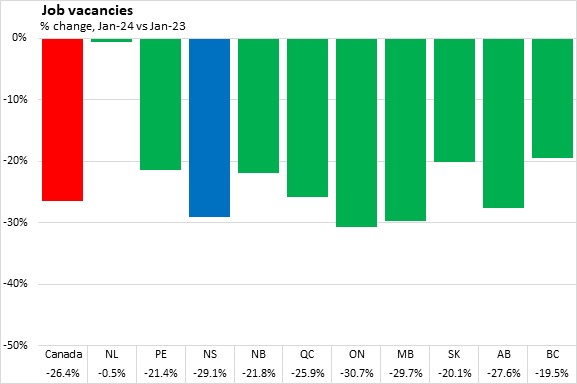
Trend
Nationally, job vacancy rates are on a downward trend after peaking in March-May 2022. Nova Scotia's job vacancy rate peaked in the spring of 2022 and has also been on a downward trend. The Nova Scotia job vacancy rate has been below the national rate for most of this period.
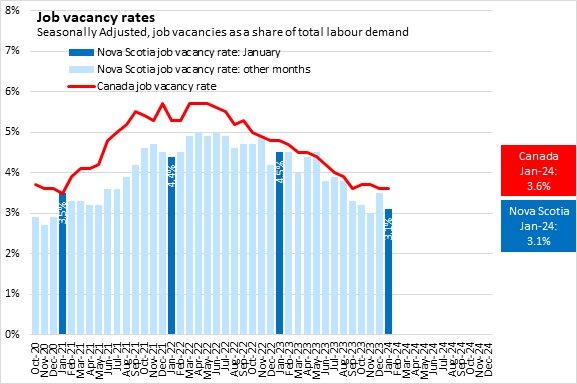
Nova Scotia's job vacancies peaked at 22,715 in June 2022.
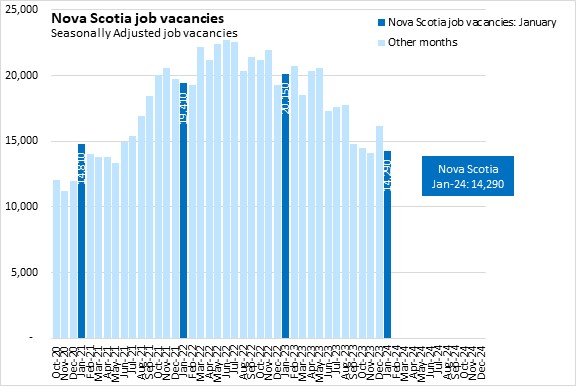
Canada job vacancy rate and job vacancies by industry, January 2024
Nationally, the accommodation and food services and health care and social assistance industries had the highest job vacancy rates. The lowest vacancy rates were in education and management of companies.
Health care and social assistance had the highest number of vacancies at 133,070 in January. Compared to January 2023, the number of vacancies declined in every industry except utilities and public administration.
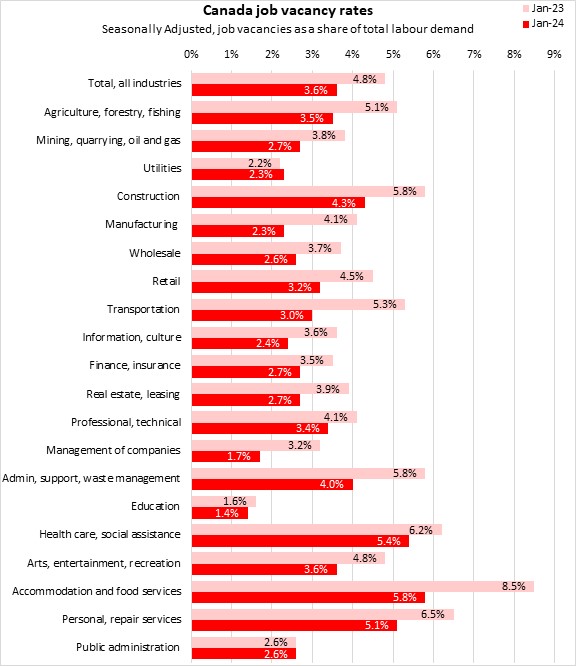
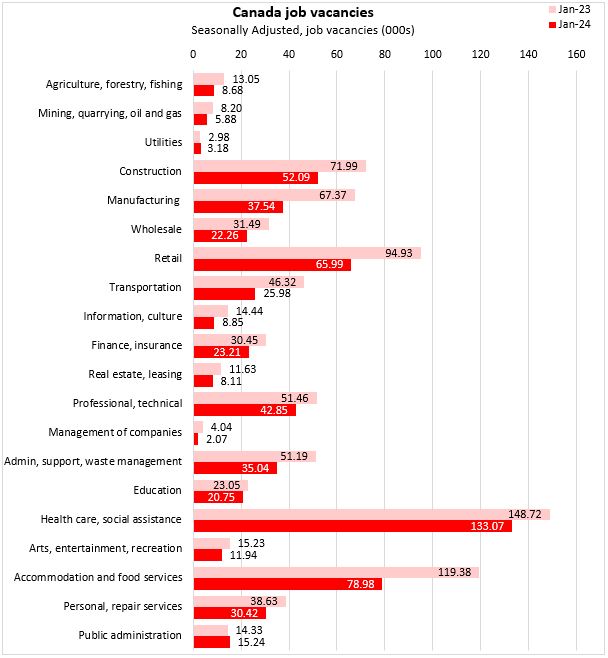
Notes: The job vacancy rate is the percentage of job positions (both filled and vacant) that are vacant. A higher job vacancy rate indicates a tighter labour market where it is more difficult for employers to find suitable candidates for the positions offered. A lower job vacancy rate signals labour market slack and potentially more job seekers competing for each vacant position.
Sources: Statistics Canada, Table 14-10-0432-01 Job vacancies, payroll employees, and job vacancy rate by provinces and territories, monthly, adjusted for seasonality, Table 14-10-0406-01 Job vacancies, payroll employees, and job vacancy rate by industry sector, monthly, adjusted for seasonality